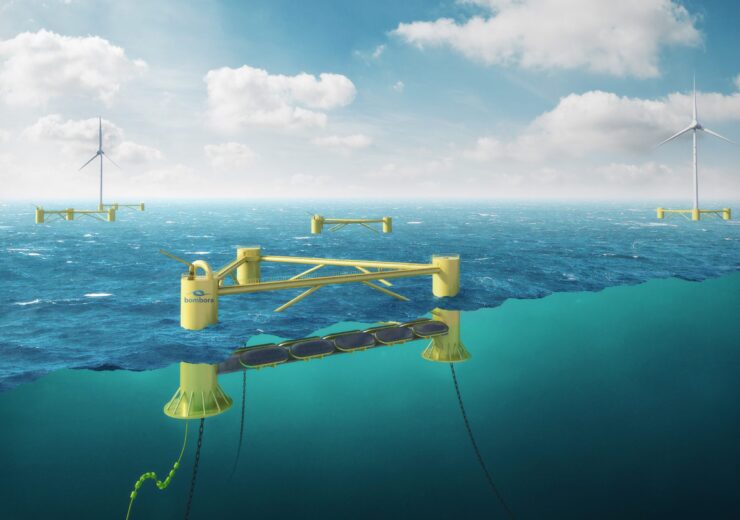MOL has completed detailed internal technology review of Bombora’s mWave wave energy converter before signing the deal

Bombora’s floating mWave co-located or integrated with floating wind turbines. (Credit: Bombora Wave Power)
Mitsui OSK Lines (MOL) has signed an agreement with wave energy developer Bombora Wave Power to identify potential marine energy project opportunities in Japan.
The deal follows the completion of a detailed internal technology review by MOL of Bombora’s mWave wave energy converter.
MOL and Bombora, as part of the second phase of their collaboration, will now work together to identify potential sites for developing both mWave energy projects and combined wind and mWave energy projects in Japan and other regions.
Bombora Asia Pacific region development manager Ryota Yamada said: “We are very pleased to be conducting this strategic site identification project with MOL. The study will seek out opportunities suitable for wave, as well as hybrid wave and wind projects.
“MOL has a clear ambition to expand its sustainable marine operations into the energy sector and are a significant collaboration partner for Bombora on this pathfinder wave energy initiative in Japan.”
MOL seeks to reduce its environmental impact
The collaboration is a part of MOL’s efforts to reduce its environmental impact while driving sustainable business growth opportunities in Japan.
Yamada added: “With a focus on carbon emission reduction we will work together to find potential development sites for Bombora’s mWave to reduce reliance on diesel fuel for island communities.
“The project will also investigate the broader utility power potential off Japan’s Pacific coastline.”
Bombora is working on a 1.5MW mWave Pembrokeshire demonstration project in Wales, UK, with installation planned in mid-2021.
Japan has set a goal to have between 30GW and 45GW of installed offshore wind capacity by 2040 as part of the country’s broader aim to reach carbon neutrality by 2050.
According to the Japanese Wind Power Association, the country alone has the potential of more than 500GW of floating offshore wind capacity.
